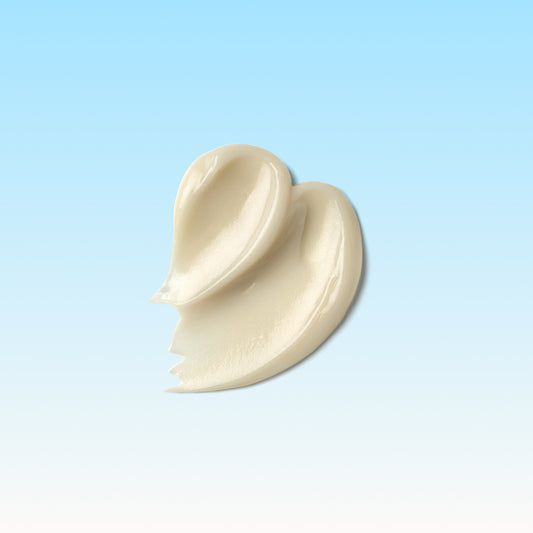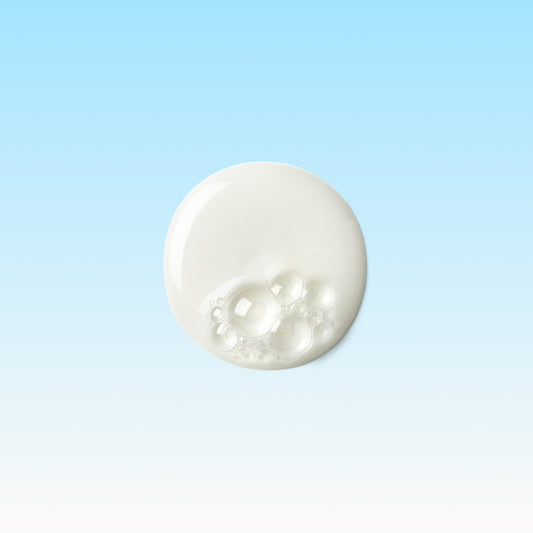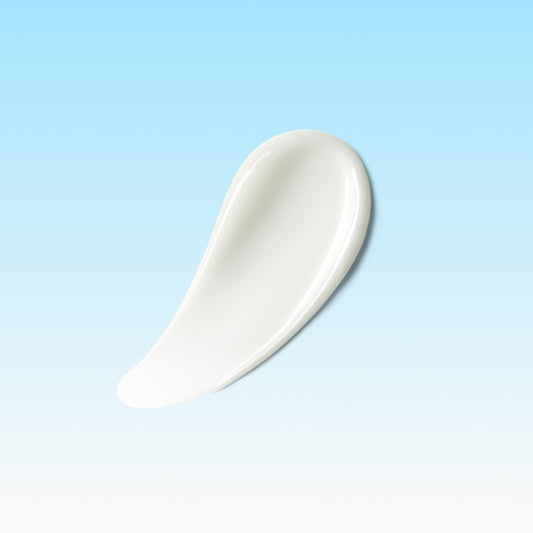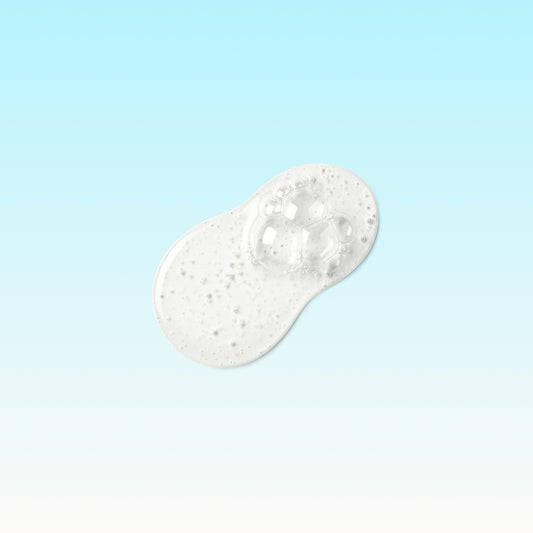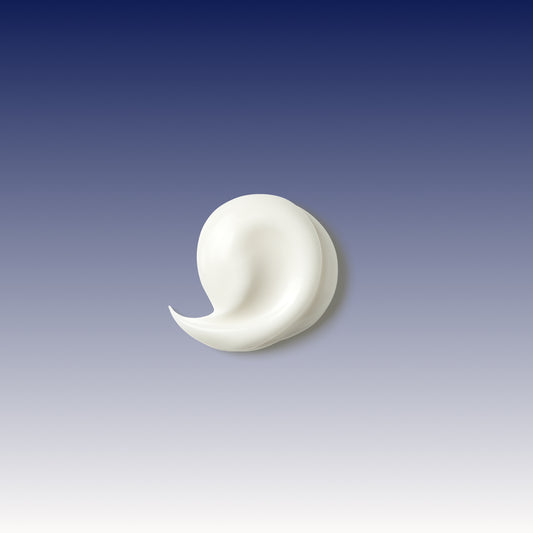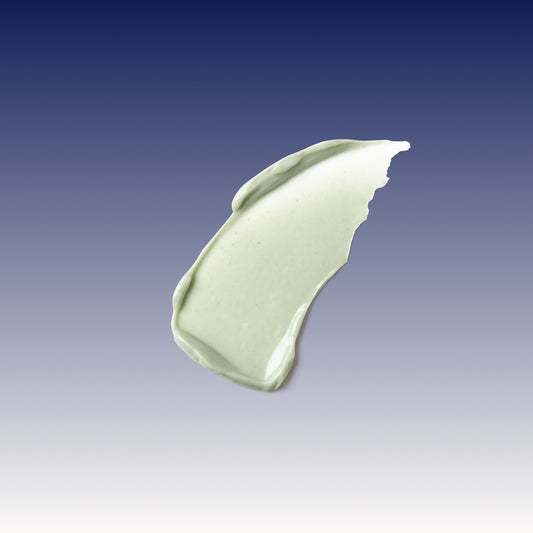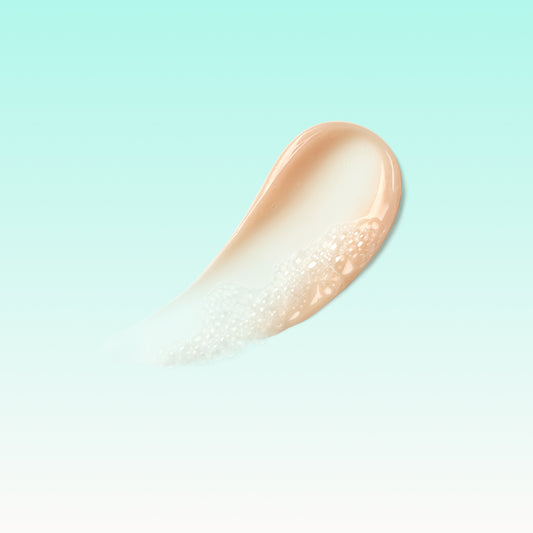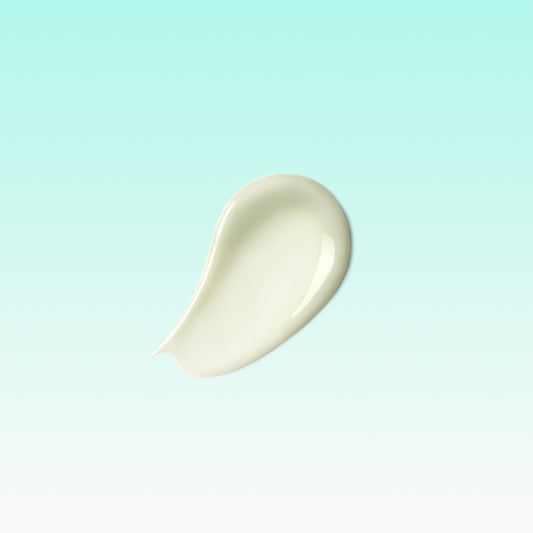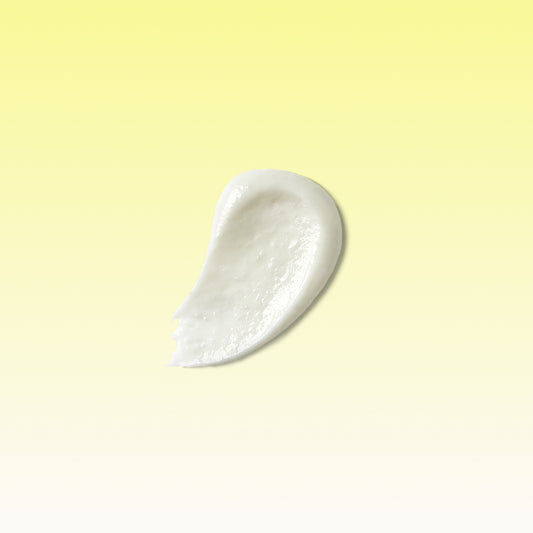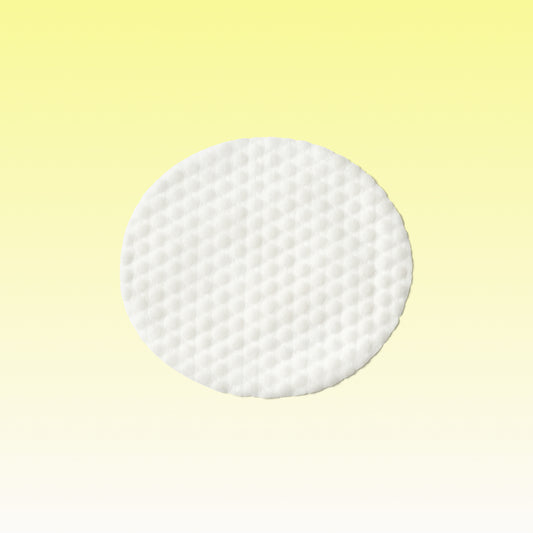S1:E7 The Pigmentation Diaries with Dr. Pearl Grimes
[Amy Risley] Total Skin Nerds is brought to you by Skinfix. We're clean, clinically active, and on a mission to help heal your skin.
Welcome to Total Skin Nerds. I'm Amy Risley, the CEO of Skinfix, and a first rate skin nerd myself. On this episode, my guest is Dr. Pearl Grimes. Dr. Grimes is one of my heroes, a passionate and crusading dermatologist who has dedicated her trailblazing career to researching and healing pigment disorders. Based in Los Angeles, Dr. Grimes is one of the world's foremost authorities on vitiligo. Having entered the field when little was known about the disease. She runs the Grimes Center for Medical and Aesthetic Dermatology and the Vitiligo and Pigmentation Institute of Southern California.
Over the course of the last four decades, Dr. Grimes has made great progress in the world of pigmentation. Coming up, we're discussing those strides in definitive terms as only Dr. Grimes can. Plus, more answers about critical pigmentation issues like, can supplement stabilize vitiligo? How does Dr. Grimes treat melasma? And what role does psychology play in her fascinating practice?
We chased this interview for months and I'm so happy we're sharing it. You won't want to miss a minute. Stick with me, skin nerds. Don't go away.
Welcome, Dr. Grimes, to Total Skin Nerds. It is such an honor to have you on our podcast. We have been waiting for this for months. We know that you are an incredibly busy woman, and we're so happy that you are here with us. It's 7:30 AM your time, Pacific Time. So, thank you so much for joining us.
[Dr. Pearl Grimes] Well, it is truly my honor, and pleasure to join you, despite the fact that it is 7:30 in the morning in Los Angeles.
[Amy Risley] And you look beautiful. So, we are so excited to talk to you, Dr. Grimes, because you are a specialist in pigmentation disorders, and we're going to dive in and talk about vitiligo and melasma. But first I wanted to understand what inspired you to pursue hyperpigmentation or pigmentation disorders in your dermatological path.
[Dr. Pearl Grimes] That's a fascinating question. I think about it often. Why did I enter this field in the '80s? And why am I still here? And I will tell you that I am as passionate about disorders of pigmentation today as I was when I started it in the '80s. Now, why did I enter this arena?
In the '80s, particularly when it comes to vitiligo, there were very, very few people doing research on vitiligo. And I happened to have a mentor who was the head of my department at the institution I trained, Howard University in Washington, DC. Dr. Kenny, he was considered one of the thought leaders in vitiligo at the time.
So, we had a vitiligo clinic and I was exposed to the trauma that patients experience. I was exposed to what I am going to call need medicine or frontier medicine, areas where the knowledge is minimal and there's an enormous need to expand and make contributions to the field.
So, my chief got a research grant, he recruited me to come back after my residency and work with him. And I've never left the area since, and there's never been a time since the '80s that I have not been engaged in some aspect of pigmentation research. So, it's my heart and my passion. And I'm still here today in the trenches doing what I love to do.
[Amy Risley] That's amazing. We love to talk to dermatologists and medical practitioners on this program who are passionate and who have a mission, which is why we were so keen to talk to you, because you truly have a mission. Just some of the statistics on vitiligo, 1% of the world, 70 million people, suffer vitiligo. I read a statistic that up to 50% are children or adolescents. You have said many times that it's one of the most psychologically devastating diseases in dermatology. So, such an important mission. Tell us a little bit about what vitiligo is for those of us who don't understand the disease. Explain what it is and why it occurs.
[Dr. Pearl Grimes] So, there are many disorders of pigmentation. Some are congenital, some are acquired. They can be classified as disorders where you lose pigmentation, an absence of pigmentation, or disorders where there's an excess. And we're going to talk about both in this podcast, which is exciting. In the case of vitiligo, this is an acquired disorder of pigmentation, where the skin develops white patches. Those white patches can either be localized or they can be generalized. If you do a biopsy on the skin, classically, we see an absence of pigment cells.
However, now we know that depending on the stage where you biopsy patients, in addition to seeing that absence of cells or a progression, you can see inflammation. That has led us to where we are today. For many years, we debated whether or not vitiligo was truly an autoimmune disease. So, at this juncture, we can say it's an acquired disorder of depigmentation, where the immune system mediates the destruction of melanocytes.
How does that happen? It mediates the destruction through the interferon gamma-STAT pathway. And that's been the basis for new therapies that we're going to talk about at some point during the podcast. So, at this juncture, we don't debate it anymore. We know that this is a classic autoimmune disorder, mediating the destruction of melanocytes.
[Amy Risley] So, in our research, we also read that this autoimmune disorder can often be associated with other autoimmune conditions, things like thyroid disorder, type 1 diabetes, lupus, alopecia. So, is there a genetic component as well? Do you see vitiligo in families? Is there something that is passed on?
[Dr. Pearl Grimes] So, to address the last part of your question, clearly there are myriad comorbidities that occur in patients with vitiligo. There's a spectrum. They include autoimmune thyroid disease, it could be hyper or an overactive or underactive thyroid, certainly the most common thyroid condition. And that's the most common autoimmune disease that we see in patients with vitiligo, it's Hashimoto's thyroiditis, but there's a spectrum.
You can see rheumatoid arthritis, alopecia areata, type 1 diabetes, inflammatory bowel disease. So, certainly, vitiligo patients have an increased frequency of comorbidities, and Hashimoto's thyroiditis is the number one comorbidity.
So, is there a genetic predisposition to get vitiligo? And I think we've been very effective in the last 10 years plus in being able to peel that onion and look at the genetics of vitiligo. And a gentleman by the name of Richard Spritz from the University of Colorado, brilliant geneticist, has been at the forefront of the genetics of vitiligo.
We know that, at this juncture, there are probably at least 50 genetic loci, that are risk loci for vitiligo. Many of these genes affect the immune system or the immune pathway. So, probably 10% plus or minus are very specific for the pigment pathway. So, we think that patients inherit a predisposition for not only vitiligo, but other autoimmune diseases. Usually, with that genetic predisposition, there's an environmental trigger, that environmental trigger can be vast. It could be sunburn, it could be stress, which has a major impact on the immune system. It could be a bacterial or a viral infection. It could be a medication. But usually there's the interface between that genetic predisposition, where you inherit a genetic predisposition and that interfaces with environmental triggers.
[Amy Risley] So, do you do genetic testing as a component of your analysis and ultimate treatment?
[Dr. Pearl Grimes] The genes are so vast. And if you look at the genome-WA or GWA studies that have been done, it can vary from continent to continent. It can vary with the population under study. So, typically we don't.
[Amy Risley] Too many variables.
[Dr. Pearl Grimes] Exactly. It's polygenic still. I think we can still say that, despite the advancing knowledge of the genetics of vitiligo, the general comment would be it's polygenic and multifactorial. I think that as this database continues to expand, then maybe down the road, that will be an additional skillset that allows us to classify patients and have better targets for who needs what regarding stabilization, repigmentation and maintenance. And that would be an amazing tool to have.
[Amy Risley] You talked about in one of the articles that I read that the bench has finally caught up with the bedside, which I thought was such an interesting concept, that the science is really progressing when it comes to vitiligo. And that you now have sort of a multi-modality approach to treating a patient. Talk a little bit, Dr. Grimes, about what are the various treatments that you do deploy when you have a patient with vitiligo.
[Dr. Pearl Grimes] So, when I see a new patient with vitiligo, I have three objectives, stabilization if they need to be stabilized, if the disease is spreading, I have to turn it off, repigmentation to bring back color into the white patches, and then I need to be able to maintain it. So, stabilization, repigmentation and maintenance.
Now, how do we categorize who gets what at any given time? The variables that I look at are, again, is the patient progressive? Are they developing new patches? What has happened over the last month? Two months? Three months? How fast is it moving? Rapidly? Slowly? Then, I look at the areas of involvement. Is that patient localized? Do they have 1% involvement? 2% involvement? 5% or greater? So, body surface area severity of disease, those are really key variables.
So, those are key variables that impact the tools that I use in my toolbox. For patients who have localized involvement, we can be pretty conservative, the topical modalities at the forefront for a localized involvement that are FDA approved, even though we use them off label for the vitiligo, or topical corticosteroids, and certainly the mid and high-potency topical corticosteroids work best.
We also rely on the calcineurin inhibitors. The calcineurin inhibitors encompass pimecrolimus, and tacrolimus, or tacrolimus, depending on how you choose to pronounce it. I call it tacrolimus.
[Amy Risley] Tomato, tomato.
[Dr. Pearl Grimes] Yeah, tomato, tomato. So, we rely on these for localized involvement. So, that's repigmentation. But I'm going to come back and talk about stabilization in a minute, because that's very key. If that patient has greater than 5% involvement, clearly, in my opinion, you have to rely on some type of systemic intervention. And when I say systemic intervention, I'm really referring to something that has a wider impact.
So, our workhorse in that respect is narrowband UVB phototherapy. Narrowband UVB phototherapy was introduced into the marketplace in the late '90s by Westerhof's group from Amsterdam. And it remains a mainstay for treating patients who have more generalized involvement with vitiligo.
And it does two things, in my opinion, it's very effective as a repigmentation modality on treatment responsive areas, which include the face, the neck and the trunk, nothing works great on the hands and feet. That's currently in our toolbox. But narrowband, when used appropriately, can be very effective for both repigmentation, and I think it also helps with stabilization. Additionally, when we use narrowband UVB, we can combine it with topical modalities, such as topical corticosteroids, and in some instances, the calcineurin inhibitors, I personally don't like to use the calcineurin inhibitors on widespread areas. I prefer if I need an additional combination for wider areas, I typically will rely more on topical corticosteroids and we cycle on and off.
So, again, if it's localized, you can just use your topical corticosteroids or your calcineurin inhibitors. For more generalized involvement, narrowband UVB with or without combinations of the topical modalities that I just alluded to. I also like, if a patient who has limited involvement, if they're not responding to the topical agents that we just alluded to, we can also combine that with the excimer laser, which is more of... The wavelength, 308 nanometers, that's also narrowband UVB.
[Amy Risley] You talk a lot about, in the research, how there is an immune response component. This is an autoimmune response. And in my very simplified terms, it's the body sort of attacking its own melanocytes, the cells that actually are responsible for our pigmentation. Is there immunotherapy? Are there immunotherapy options for patients that are struggling with vitiligo?
[Dr. Pearl Grimes] This is an exciting new area. The area of immunotherapy for vitiligo began to emerge in the last maybe four or five years. There were reports of improvement with the small molecules, with the JAK inhibitors, case reports of repigmentation with tofacitinib and subsequent repigmentation cases with ruxolitinib. So, at this juncture, many pharmaceutical companies are interested in moving forward with JAK inhibitors, either orally or topically for repigmentation of vitiligo.
And the science, which has driven the pathways for JAK inhibitors, it's based on our abilities in the past to work out pathways, mediating the destruction of the melanocyte in vitiligo. So, we now know that cytotoxic lymphocytes, or CD8 lymphocytes, produce gamma interferon. So, gamma interferon is a key player, which drives the JAK-STAT pathway key or cytokine production.
So, once we were able to work out that pathway, which is so essential in the destruction of melanocytes in vitiligo, that is what has given birth to the science of moving forward with JAK inhibitors as agents for repigmentation in individuals who have vitiligo. We just had a paper published, I was one of the investigative sites using ruxolitinib in a multi-center trial. The paper was just published in Lancet. So, just to make a general statement, ruxolitinib, in the 52-week database, was extremely effective, particularly in inducing repigmentation of facial areas in patients with vitiligo.
[Amy Risley] So, is the immunotherapy then sort of treating... Is it helping to not only stop the progression, but also do the repigmentation? Is it kind of tackling all of the areas of vitiligo that you're attempting to treat?
[Dr. Pearl Grimes] Well, I think we haven't really teased that out. It's clearly effective as a repigmenting agent. And I think its ability for stabilization is ultimately going to be a function of the route of delivery, whether or not you're giving the JAK inhibitor orally or whether or not you're giving the JAK inhibitor topically. When we talked about therapies for vitiligo, I just want to go back and talk about stabilization, because when we have a patient who has moderate or rapidly progressive vitiligo, we really need to address stabilization as well as repigmentation.
I mentioned that narrowband UVB can help stabilize and repigment, but we also may need to use systemic corticosteroids. You can use oral mini-pulse dosing, or you can give dexamethasone four milligrams on two consecutive days per week, I typically will go for six to eight weeks. Or my other favorite modality is using intramuscular Kenalog. This is an approach we've used for many years. Some of my colleagues don't like it, but I do, because I have steroids in the system for a longer period. And we've used this modality and I find that the benefits significantly outweigh the risk, in some women it can cause menorrhagia, but if you let them, but that's in truly the minority, less than 2% of individuals that you treat.
So, when I give patients the choice, very often many will just say, "Give me the injections, so I don't have to think about anything else." So, that's another approach that we use for stabilization. I think we're going to talk about supplements too, because I think that supplements can play a role in stabilization as well.
[Amy Risley] Yes, yes. I'd love to talk about supplements. And before we jump into supplements, can you just explain, in layman's terms, what a JAK inhibitor is?
[Dr. Pearl Grimes] So, let's talk about the Janus kinase pathway first. Janus kinase, I'm going to call them enzymes. They're enzymes in the cell, which they're tyrosine kinase enzymes, which are key, they combine with STAT, and they are key for cytokine production. Cytokines can be inflammatory molecules that are key players in autoimmunity. Still, if you have a JAK inhibitor, a Janus kinase inhibitor, these inhibitory molecules block the effects of the Janus kinase-STAT pathway, mediating inflammation, and autoimmunity.
[Amy Risley] Would the JAK inhibitors to be beneficial to all types of autoimmune disease? So, if someone has lupus or has a thyroid, has Hashimoto's, would that also help to treat that disease as well?
[Dr. Pearl Grimes] Well, we don't have the data yet where we can address whether or not the Janus kinase or JAK inhibitors will impact comorbidities associated with vitiligo. We just don't have that data yet. Now, if you asked the question a different way, and you ask whether or not the JAKs have been used to treat other autoimmune diseases, absolutely. We just don't have the data yet to know whether or not when you treat with a JAK in patients who have vitiligo, whether or not they will be effective in mitigating the likelihood of that patient either, one, getting a comorbidity or, two, being effective in treating the dual comorbidities.
[Amy Risley] Okay. So, lots of research to come. And it's wonderful that we have doctors like yourself that are really pushing forward to try to understand this disease in more specificity to really help people. So, it's exciting, it's exciting research and it's exciting that there's a lot of good things that are coming out of the research that you're doing.
[Dr. Pearl Grimes] So, we just opened the door with the JAKs. And if you take a peek inside the door and what we have to ultimately delineate and explore, it is enormous. So, it's enormous. And it's so exciting.
[Amy Risley] Let's talk a little bit about supplements, Dr. Grimes. You mentioned that there are supplements that can also help support someone who is tackling vitiligo. How do they work? And what are the supplements that you like to recommend?
[Dr. Pearl Grimes] I have been on board for supplements in helping to stabilize vitiligo for many, many, many, many, many years. And before I really take a deeper dive into supplements, let's just talk about one of the pathways. While we view vitiligo as an autoimmune disease, we also know that there are multiple studies in the literature which describe the phenomena of oxidative stress or reactive oxygen species being key players in mediating the destruction of melanocytes.
So, what are reactive oxygen species? They're generated during the metabolism of oxygen in cells, it's actually a normal process. It can be generated during the proliferation of cells, metabolism, destruction of cells, even in melanocytes, reactive oxygen species are generated when you make melanin. So, these reactive oxygen species can be singlet oxygen, hydroxyl radicals, hydrogen peroxide. So, when the system goes awry, and you're producing too many reactive oxygen species, whether it's vitiligo or a litany of other diseases, they can be very damaging to cells. They damage DNA, they damage RNA. They can cause lipid peroxidation of cell membrane. So, very damaging to cells.
So, we think that, in patients who have vitiligo, the natural systems that most of us have to control oxidative stress, it doesn't function as well. So, we think that reactive oxygen species may be the first pathway that's involved in the release of neoantigens that subsequently activates the immune system in patients with vitiligo.
So, now, with that background, let's bring it back to supplements. The supplements that I like, in patients vitiligo, are supplements that impact oxidative stress in patients. One of my favorites is vitamin D. Vitamin D is not a vitamin, it's a hormone. It impacts over 200 pathways in the body. It impacts the immune system, it modulates immunity, but we forget about the fact that it's also a very powerful antioxidant and it activates probably the most powerful antioxidant, your natural antioxidant pathway in the body that's called nerve [inaudible 00:29:03].
So, there's vitamin D. There's alpha-lipoic acid that we use that stimulates the production of glutathione, which is the most powerful antioxidant in the body. And there's work would suggest that if you measure glutathione levels, depending on whose paper you may be reading, glutathione levels may be deficient, hydrogen peroxide may be elevated. And Ginkgo biloba is also, it can function as an antioxidant.
And there's a very nice recent paper that was published, which showed that Ginkgo biloba is a major activator of the nerve [inaudible 00:29:50] key antioxidant pathway in the body. So, when I use antioxidants, I'm targeting the... When I use supplements, which I prefer antioxidants, this is the driving force, because if I can decrease oxidative stress, I'm hoping that that helps me with stabilization. Others that are reported in the literature, so we've mentioned alpha-lipoic, vitamin D, Ginkgo, certainly there are studies on vitamin C, vitamin E. So, there's a litany. And so, this is also an emerging area.
[Amy Risley] Very exciting. It sounds like you're attacking it from all angles-
[Dr. Pearl Grimes] Exactly.
[Amy Risley] ... with these various modalities. So, let's change direction a little bit. Vitiligo has been referenced as one of the most psychologically difficult dermatological disorders for patients to deal with. There was a New York Times article that one patient was quoted, "Vitiligo doesn't kill you, but it kills your spirit." And I know you've talked a lot in your research about how you have psychological intervention when you work with patients with vitiligo. Let's talk a little bit about some of the psychological impacts that you see in your patients.
[Dr. Pearl Grimes] Vitiligo, no doubt, is, I think, one of the most psychologically devastating disorders in vitiligo, it doesn't hurt, but it's pretty darn painful for many patients. So, how do I approach the emotional, the psychological impacts of vitiligo? And as a caregiver, hopefully, I can facilitate or play a role in the patient's coping skills. So, my basic approach is to listen, to show that patient compassion, to show that patient empathy and respect and understanding, listening is key and imparting knowledge is so important, because so many patients in this digital area are very familiar with Dr. Google.
[Amy Risley] I've been guilty of it myself, Dr. Grimes.
[Dr. Pearl Grimes] Well, Dr. Google is great in many respects, Dr. Google can be pretty tough too, if you really can't tease out the accuracy of the data. So, for me, in being able to support that patient, being able to share a knowledge base, that's grounded in two things, evidence-based medicine and what I call experience-based medicine. And being able to share that with the patients. So, rather than them being totally traumatized by their condition, they engage their condition. So, it becomes a process.
And I'll share one other thing with you, there's this great quote from Maya Angelou, and she said, "It doesn't matter what you say, it doesn't matter what you did, but it's all about," and I'm paraphrasing, "How you make someone feel."
[Amy Risley] I love that quote.
[Dr. Pearl Grimes] And I think that that is so absolutely key in that first interaction consultation with my patients with vitiligo. And I think, if I can support them as their caregiver, knowing the vicissitudes of emotions that they're already dealing with, I become a key part of their support network. And additionally, if they need that psychologist on their team, it's my job to be able to tease out who can manage their own trajectory without that support, and then who needs it. And I'm there to make those recommendations.
[Amy Risley] I think it's so interesting that we don't often think of dermatologists as playing such a key mental wellness role. And yet, so many dermatological issues are very impactful to people's quality of life and self-esteem. And that sort of understanding, and that empathy that you talk about is so important in that client interface, in that physician-patient interface. Have people like Winnie Harlow been helpful with raising the awareness of vitiligo and also helping your patients to feel more confident in their own skin?
[Dr. Pearl Grimes] That's a great question. I think that the popularity, the visibility of Winnie Harlow and her vitiligo has really created paradigm shifts in how patients engage and accept their vitiligo. And I'm going to give you two trajectories now, because I think that this is what has emerged. If you go online now and you look for images of vitiligo, they're everywhere.
So, Winnie has been at the forefront for a group of patients who, one, have engaged their vitiligo in a totally different way. They engage the beauty of it. They embrace the contrast between the depigmented patches and their normal skin, and they love it, and they're not interested in treatment. And I am very respectful of those individuals and they don't see it as a disease, they don't want to address it as a disease. And again, I'm very respectful.
My response to that is, it still is an autoimmune disorder. So, at least, come in, get a physical, get your labs checked so that we can be ahead of any potential comorbidity that may evolve if you're not interested in treatment. So, that's one group. And I think Winnie's visibility has driven that group of individuals.
But there's also that larger group who remain emotionally and psychologically devastated, and it alters their quality of life. They're comfortable in vitiligo being called a disease, and they are desperate for therapeutic intervention. I think that it's the majority group, and this is the group that will dry the new science for new interventions, new therapeutic interventions for vitiligo.
[Amy Risley] Yes. Yes. So, for those that are struggling with vitiligo, how do they best access an expert? Are more dermatologists really leaning into the skin concern? Are they getting more educated? I mean, you obviously have been working at this since the '80s and are a foremost expert in the space, but how do people who don't have access to you, who don't live in Los Angeles, how do they get the right therapies?
[Dr. Pearl Grimes] I think that it can happen from two paths. I am a member of the Global Vitiligo Foundation. And if patients go to that website, they can find a list of doctors, because there is a section for patients, they can find physicians who treat vitiligo. There are some other evolving organizations, patient support groups that will serve the same purpose. And there are other support groups in various cities around the country. I think we may have about 30 support groups now.
And usually those patient support groups have a list of physicians who treat vitiligo, but compared to where we were, there's still, in my opinion, a dearth of physicians who are interested in treating it, unfortunately, but it's growing, we're getting better and better. And probably, with the new drugs, as they become approved by the FDA, my wishlist is that we get more and more physicians on board, who engage vitiligo with empathy and compassion, and who are truly interested and committed to treating patients with, again, this psychologically devastating disease for the majority of patients.
[Amy Risley] Yes. Well, and as you said earlier, it's an autoimmune disease that is often associated with other comorbidities, and it's really important to make sure that those patients are being treated and that that autoimmune condition is being managed. So, it's such important work that you do. So, thank you for that. Just want to switch gears a little bit now. And we've been talking about vitiligo, which is an absence of pigmentation.
I'd love to talk a little bit with you about melasma, which is a condition where you have too much pigmentation, sort of the opposite, in terms of what's visibly happening to the skin and obviously hyperpigmentation and melasma are huge concerns for so many people, and so many of our clients ask us lots of questions about how to treat them. Can you talk a little bit about melasma and what's going on in the skin when that condition arises?
[Dr. Pearl Grimes] Well, I'm going to begin this discussion by saying, would you believe there are patients where vitiligo and melasma can coexist in the same patient and that's the ultimate frustration? And my response is usually, look, I can't treat both at the same time, I'll get it done, but let me buy time, it's one or the other.
So, the melasma population is a much larger population of individuals compared to vitiligo. It is not an autoimmune condition. It is equally or even more frustrating for many patients. And the reason why is if I get a vitiligo patient in remission, I can keep them there for a little bit longer. Whereas in melasma, you can have a patient who looks fabulous on Friday, and if they go out and get a weekend or more of sun exposure, that patient can relapse.
So, our knowledge base of melasma has really expanded, but it, no doubt, in my practice, remains a therapeutically challenging condition. I tell patients, "Unfortunately, I can't cure you, but my goal is to make you better and to keep you better for as long as I can." So, I typically use an aggressive form of treatment followed by a maintenance form.
I think that our knowledge of melasma, of what the causal factors are, it's expanded significantly in the past five to 10 years, we know that this is a very complex condition that involves a genetic predisposition and genetics probably plays a role in melasma in at least up to 35%, 40% of patients. It is extremely... So, there is the interface between genetics, reactions to how your melanocytes respond to ultraviolet and even visible light. And I'm going to expand on the visible light story in a second, because I think it may well be the key player in why we see the types of flares that I just talked about.
So, genetics, sun exposure, hormones probably play a role, medications can play a role. So, there are a spectrum of contributing factors, I think, for that individual who may be genetically predisposed to get melasma. I mentioned visible light, because there's an emerging database now, which suggests that, unlike ultraviolet light, UVA, UVB, we know that visible light has the ability to trigger significant pigment, particularly in your individuals who have skin types four through six, and that pigment that's generated can be long-lasting.
So, the emerging data now suggests that visible light may well be a major player in patients who get melasma and we're still struggling to get better visible light sunscreens that you use in combination with ultraviolet light. So, melasma, again, very challenging, but I think we're moving forward therapeutically.
[Amy Risley] So, visible light, Dr. Grimes, would that include indoor light, light from our devices? Can you define for us what visible light is versus UV?
[Dr. Pearl Grimes] Yes. So, if you look at the electromagnetic spectrum, visible light probably encompasses about 40% to 42% of the light that hits the Earth surface, and it's what's visible to the eye. So, there's the natural source of visible light, but I'm so happy you mentioned artificial sources. There are myriad artificial sources of visible light. They include this very computer screen that we're looking at right now.
[Amy Risley] Yes. Hopefully we're wearing our zinc oxide sunscreen, right? Or foundation.
[Dr. Pearl Grimes] Yes. So, their computer screens, your phone screen, the light in the room. So, again, your television, all of these are artificial sources of visible light. So, I will mention that this is a conversation during this pandemic, when we have digital calls and we're glued to our computer screens. I think it's more important than ever that we have the visible light discussion.
I just published a paper, it was published in the last two weeks on visible light. It was work that I did with Dermablend. And the Dermablend products have very high iron oxide content. And iron oxide is the key player currently in diffusing the effects of visible light and in the experiments that we described in that paper, which were in vitro and in vivo. The Dermablend product that we tested was very effective against visible light.
[Amy Risley] Interesting. So, if iron oxide is the key ingredient, clearly want to use a sunscreen with iron oxide, often foundations will contain that ingredient as well. So, it sounds like the idea is you really need that physical block on the skin every day, all day, whether you're indoors or outdoors.
[Dr. Pearl Grimes] I think you're absolutely correct. The confounding variable right now is, if you look at what is on the market, we don't know the threshold or the content of many of the products on the market right now, and their ability to block visible light. So, we think now from studies in the literature, you need to have at least about maybe 3.5% iron oxide in products to be effective. And many of the marketed products don't give you the content.
[Amy Risley] Yes, isn't that frustrating? I know at Skinfix, which is my skincare line, any active ingredient, we list its actual percent, active percent on the side of the pack, because it is frustrating when you use an ingredient and you need to know what level it's at, for multiple reasons, to know that it's working, and to also know if there's a sensitivity.
Let's talk about, speaking of ingredients, what other ingredients do you find are helpful in treating topical ingredients that are helpful in treating the melasma? You talked about some sort of resurfacing agents, things like AHAs, but as well, I read something about curcumin, turmeric has been helpful, niacinamide. What ingredients, Dr. Grimes, do you look for in topical products for someone that suffers from melasma?
[Dr. Pearl Grimes] There are a number of topicals that have been shown to be effective for melasma. And my go-to topicals are influenced by the severity of melasma. So, I'll talk first about, from a historical perspective, most of the topicals that we have used have been tyrosinase inhibitors, that block... Tyrosinase is the rate-limiting enzyme for pigment production.
So, most of the products we've used have been tyrosinase inhibitors. And the mothership of those products is hydroquinone. And even though it's 60 plus years old, there's a cohort of patients that I treat at the institute who will only respond to hydroquinone, or hydroquinone has to be a part of their regimen in order to be able to achieve the desired outcome.
But there is a rapidly emerging field, where we really are in a quest for the non-hydroquinone grail for treatment of melasma. So, what are the products, as we move forward, in looking for that grail for pigment reduction? There's a spectrum. Azelaic acid will work in a cohort of patients, many products contain niacinamide. Licorice is used. Arbutin is used. We know that oxidative stress can be a player in melasma. Visible light can induce oxidative stress.
So, many formulations are... I would say, the typical non-hydroquinone formulation is a potpourri of multiple ingredients, and those ingredients may well contain antioxidants. You mentioned turmeric. Turmeric, curcumin, powerful anti-oxidants, niacinamide can be an antioxidant. Some products contain resveratrol, a powerful antioxidant.
So, I think that we're not there yet, but companies continue to look for the new grail of a non-hydroquinone regimen that is ultimately superior, and that is extremely effective in all skin types, because I think that melasma can be more challenging in darker skin types versus lighter skin types.
And interestingly, if you... And the key, I tell, when I'm lecturing, the workhorse for treating melasma is not a resurfacing procedure. You can combine recent resurfacing procedures, peels, lasers, whatever toy you like, but the workhorse for melasma has to be, number one, a sunscreen, appropriate sunscreen, we've already addressed that. And number two, a daily excellent topical regimen, which can then interface with your favorite resurfacing procedure if needed. And that procedure should be based on the skin type, the efficacy and safety of the resurfacing procedure itself.
I happened to be a [inaudible 00:52:32] person. My standard approach when needed is to combine sunscreens, the topical modalities and peels. And sometimes, depending on the skin type, I may resort to laser or light sources, but we certainly use peels much more often.
[Amy Risley] Okay. Interesting. Well, I'm going to send you some of the Skinfix Dark Spot Corrector. We use a lot of the ingredients that you called out, niacinamide, licorice, turmeric. So, I would love to get your feedback on that product. And one of the things that you mentioned at a conference that we attended was the importance of the health of the skin barrier itself. We've talked a lot about what's going on internally with some of these conditions in terms of autoimmune responses or responses to oxidation, but there also is an element, as you've talked about, in just having a healthy functioning skin barrier that's got optimal lipids. Can you talk a bit about the importance of keeping the skin barrier healthy to help it to respond better to some of the treatments that you might employ?
[Dr. Pearl Grimes] I'm delighted that you mentioned the barrier, because maintaining the integrity of the barrier in patients who have melasma is so key. Interestingly, there have been a number of transcriptomic studies where they've looked at genes in patients who have melasma, and guess what? The barrier is abnormal, the lipids, which are so key in barrier function, are down-regulated. And even if you do studies on transepidermal water loss, and you compare the skin of patients who have melasma with the control group, there is an increase in transepidermal water loss, which continues much longer than what you see in a control group.
So, if you interpret all this data, the conclusion is, compared to normal skin, the barrier is abnormal in patients who have melasma. So, how do we address that? I think that if you look at some of the existing tools in the toolbox, they can be very damaging to the barrier. And I have a schematic that I use when I lecture on melasma and clearly moisturizers, barrier protection, it's a part of the general approach that I use in treating patients.
So, barrier protection, key, hydration. So, very important that we respect it, that we treat it, that we massage it, and that we maintain it as an integral part of our therapeutic approach for patients who have this condition.
[Amy Risley] It's so interesting. I suffered melasma post-pregnancy, and my mother has it, and it's something that we both have struggled with. And I, my reaction, my response is to just use every chemical peel that I can get my hands on and just try to get rid of it. And often, at the detriment of my skin barrier, which is probably then causing the problem to be worse and be cyclical.
So, replenishing those vital lipids and making sure that the skin, to your point, is hydrated and that you're not creating more transepidermal water loss is so important in the concern. And we don't often think about that. We'd rather wage chemical warfare on our skin and not give it a chance to really heal itself and give it the sort of love and care that it needs.
This has been such an incredible conversation, Dr. Grimes, and I think will be so helpful to so many people. So, thank you so much. And before we wrap up, I wanted you to tell us a little bit about CARRY, which is an organization that I know is very close to your heart and we'd love to hear a little bit about that.
[Dr. Pearl Grimes] So CARRY is my baby, and it stands for the Coalition for At-Risk-Restoring Youth, and I'm the founder of CARRY, and it started in 2006. And if you ask, why did I start CARRY? I am a firm believer in, I'm going to paraphrase a biblical quote, Luke, "To those who have been given much, much is expected." So CARRY is my giveback. It is my ongoing make a difference. My societal make a difference. So CARRY's mission is to make a difference in the lives of foster and at-risk youth through programs, which foster self-esteem, self-worth and long-term success.
And we do it through, we execute our mission through pro bono dermatology, etiquette classes, etiquette social skills, camp activities, scholarships for foster kids. And I'm delighted to say that, I think that since our birth, we really have impacted the lives of over 5,000 youth in the Los Angeles area.
I'll share this with you. I just had an amazing, it's about a week ago, 10 days ago, leadership call with one of the schools that I work with, because we had to do something different in this digital space. So, I had 20, 21 kids on a Zoom call and the principal, he said, "Pearl, will you talk about leadership?" So, I called it the keys for change. And these kids were like a sponge. And I cannot tell you how emotionally impacted I was from the queries, the questions that I got.
And one young woman, she wrote me a letter, and she said, "I didn't know I could be a leader and fail. And you said that failure is okay, as long as you can think about it and have resilience and learn from failure, and that it ultimately will make me a better person and a better leader." So, yeah. So, this is what I do, and I will always work with kids.
[Amy Risley] Amazing. I just think it's really incredible, Dr. Grimes, because you're so mission driven in all aspects of your life, your profession is about a mission-driven purpose. And then CARRY is clearly something close to your heart and mission driven as well. And you're a woman who is incredibly busy. You lecture all over the world, you are preeminent in your profession. And for you to take the time to devote to CARRY is just really inspirational.
So, I'm glad we had a chance to hear from you that how important it is to you. And we will certainly provide our listeners with information about CARRY as well as all of the great work you do. So, I just wanted to say thank you so much for being on the podcast, Total Skin Nerds. We have learned a tremendous amount from you, and we hope that this little effort of ours will help to propel more research in the space of vitiligo and hopefully educate more people about the condition. So, thank you so much.
[Dr. Pearl Grimes] And again, this has been very interactive and fun.
[Amy Risley] It has been fun.
[Dr. Pearl Grimes] Truly my pleasure, and my honor to participate.
[Amy Risley] Oh, thank you, Dr. Grimes. I hope we can meet in person someday soon.
[Dr. Pearl Grimes] I would love to.
[Amy Risley] It would be great. Hopefully very soon, we'll all be able to travel again and see each other face-to-face. Dr. Grimes, thank you so much for being here on Total Skin Nerds. It was an absolute pleasure to speak to you today.
[Dr. Pearl Grimes] Thank you so much for inviting me to participate in this podcast. It's truly been my honor and pleasure.
[Amy Risley] Have a wonderful day. To learn more about Dr. Grimes' work, visit her website, PearlGrimesmd.com. Follow her on Instagram, @drpearlgrimes, and check out her nonprofit, the Coalition for At-Risk-Restoring Youth at www.foratriskyouth.org.
I learned so much from talking with Dr. Grimes. She is truly an authority and an inspiration. Here are the three things I can't stop thinking about. One, the science of pigmentation and repigmentation is fascinating and complex. I love the way Dr. Grimes communicates that science with conviction, passion, and in a way that really conveys the intricacies and machinations of our largest organ, our skin.
Two, Dr. Grimes take on vitamin D captures the supplement's power and myriad uses in terms of immunity, antioxidants, and all the pathways and impacts in our bodies. Many people are deficient in vitamin D and I'm going to have my levels rechecked.
Three, the connection between melasma and abnormalities in the skin barrier is real. It's yet another instance of why we take skin barrier health so seriously at Skinfix, and we'll continue to educate and lead when it comes to the types of barrier therapies Dr. Grimes is advocating for.
Thank you for listening to this episode of Total Skin Nerves. Please, subscribe to our show on iTunes and Spotify. Total Skin Nerds is produced by Rob Corso, Casey Kahn, and Howie Kahn, for FreeTime Media. Our theme music is by John [Palmer 01:02:58]. Special thanks to [Simret Yohannes 01:03:01], Kathryn Spears, Kara Canning, Ginny Chien, Jane Meredith and Meghan Collins. And I'm your host, Amy Risley, till next time, nerds.
Total skin nerds is brought to you by Skinfix, we're clean, clinically active and on a mission to help heal your skin.
Speaker 3: Total Skin Nerds is a podcast created to educate. It is not a substitute for professional care by a doctor or other qualified medical professional. This podcast is provided on the understanding that it does not constitute medical advice. If you are looking for help with a skin concern, we would encourage you to seek the advice of a board-certified dermatologist, functional medical practitioner, or other qualified healthcare provider. You can find a registry of board-certified dermatologists in the US at find-a-derm.aad.org, and in Canada at dermatology.ca. For a registry of qualified functional medical practitioners, you can visit ifm.org. Thank you so much for joining us on this episode. We hope that you enjoy listening to Total Skin Nerds, as much as we enjoy making.

















